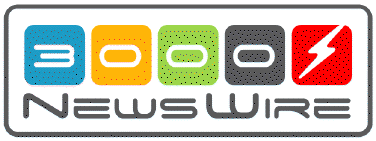 |
Click for Adager Sponsor Message |
| June
2000
Newest ADBC accesses more 3000 files MPE, KSAM spool files can link to Java client apps for alternative to JDBC Advanced Network Systems (www.advnetsys.com, 908.237.1700) has released ADBC version 2.1.0, which adds supported Java classes to handle MPE, KSAM and spool files. The software provides direct IMAGE/SQL access, without requiring JDBC, ODBC or SQL statements. Programmers new to the HP 3000 or those with only 3000 background will find the classes easy to use, said Advanced Network’s founder David Thatcher. “Whether you are using IMAGE, MPE, KSAM or spool file access, the retrieval of the results uses the same Java class syntax,” he said, “making the internal native calls transparent to the programmer.” Version 2.1.0 also improves performance on data retrieval from the HP e3000. The version supports subroutines, functions and system intrinsic calls from any Java platform that implements Java. “The new feature allows for the reuse of existing business logic in Web e-commerce solutions written in Java and ADBC,” Thatcher said. Its intrinsic class wraps any pre-existing subroutine from any XL on the 3000, from any remote platform. “One of our customers used the ADBC subroutine classes to access a very complicated mathematical routine located in an XL,” he said. “It saved the company time and money, and allowed them to use their HP e3000 standards in their e-commerce solution.” System intrinsics can also be executed from the ADBC intrinsic class, a feature that can incorporate system intrinsics into e-commerce solutions. Dynamic database logging, roll-back recovery and support for third party indexing have also been implemented with ADBC version 2.1.0. James Anderson, an IT manager at German medical solution provider MeCom Gmbh, has built an application using ADBC as the data-access layer in a reconstructed version of an integrated medical lab/practice system. The company has built an object-class library on top of the system to map between an existing IMAGE-based store and a Java-based object model for laboratory processes. “By using ADBC we can afford our customers a gradual change-over to the new application while their existing IMAGE database remains the persistent store,” Anderson said. “It even makes it possible for us to continue maintaining the older system for those customers who are reluctant to move to a new product.” Since the application environment at the company is Java-based, it permits network-transparent access and client operating system independence. “Both of these should translate into lower costs to our clients,” Anderson said. “In the former case, it will mean that they will be able to offer their clients better, online access to work-in progress without having cover the licensing fees for emulator software or terminal ports.” Anderson said one of the ADBC benefits is that its Java interface provides a close match to the existing logical access methods in use in the existing COBOL-based system. “At the same time it handles many of the details, so as to make it possible to code on a higher level than before,” he said. “This means our programmers can easily transfer their present knowledge of coding patterns and database structures to using the simpler ADBC API.” Early ODBC-based data interfaces got some testing at the company, which found that they did not match well to its database structures. JDBC interface wasn’t even an option when they started the project. The new 2.1.0 version of ADBC will allow Anderson to support HP-process control from the remote Java application. “This will allow us to integrate existing batch processes into the new application without changing them,” he said. |
Copyright The 3000 NewsWire. All rights reserved.
